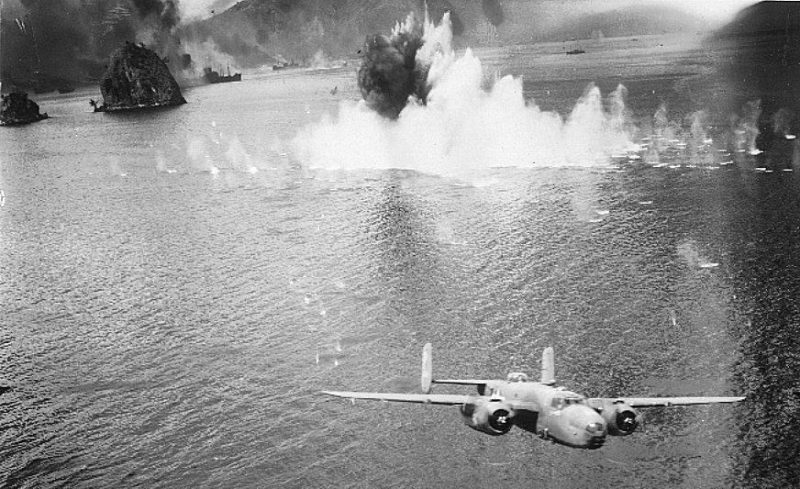Richard Sherman trained as a bombardier and navigator for B-25 bombers. He served in the 11th bomb squadron. He served 13 months in China, during which he flew 52 missions and was shot down once. During that time, only seven men from his squad were lost.
He was shot down on February 13th, 1944. What they thought was a Chinese fishing vessel was a Japanese warship in disguise.
Sherman used his “pointy-talky,” a Chinese-English dictionary, to communicate with the Chinese to get help getting to a place where they could get picked up.
One of the Chinese told him that the dictionary wasn’t necessary – he spoke perfect English. The Chinese took the Americans by charcoal-powered bus, occasionally stopping to stir the charcoal. At every village they came to, the people held a celebration. Sherman has a piece of cloth, signed by the Chinese, as a memento of this time. Only later did he learn that the Japanese would have killed him and the Chinese who signed the cloth if they had found it.
Sherman claims he didn’t have enough sense to be scared. That, along with his training, kept him from panicking – but there would be tense times while in China.
Raids into China were typically scheduled in the morning. The flight to pick up Sherman and his crew was later in the day. The Japanese were bombing the American airfield, so the flight kept getting pushed back.
The flight crew was told to contact the Chinese for instructions on where to land. As the day turned to night, the crew was unable to see a runway when someone on the radio told them to “put your wheels down and get ready to land.” Suddenly, kerosene lamps outlined the strip.
Sherman’s parents had received telegrams stating that he was MIA. Now they received one from the Red Cross stating that they should disregard any previous message. At that point, they knew that he was OK.
As a bombardier, Sherman sat towards the front of the plane. Once, his plane was hit by Japanese fire, sending Plexiglass into his arms and face. Seventy-one years later, an x-ray technician noticed that he had a foreign object between his eyes. Since it had been there so long without causing issues, it was decided to keep it there. Sherman received the Purple Heart for that mission.
Gen. Claire Chennault always knew where his men were, according to Sherman. Chennault was not one to kid around, but if you did your job, you would have no trouble from him.
After WWII, Sherman worked at Olin Mathieson. One day he received a phone call asking how quick he could get his clothes together and get to Cincinnati. Five days later, he called his wife Pat to tell her he was in Germany. The Russians and Germans had moved tanks to the Berlin Wall, making the U.S. nervous. Sherman was put in charge of the automotive division, which was required to be able to pack up and move overnight, if necessary.
Chennault continued to be connected throughout Sherman’s lives. Their son became friends with Chennault’s grandson when they attended Neville High School together. Also, the Shermans, along with Nita Brinson and others, helped start the Aviation Historical Museum that is now known as the Chennault Aviation and Military Museum. Sherman has some memorabilia on display in the museum.
They also have several paintings that Chennault painted after retiring from the military.
